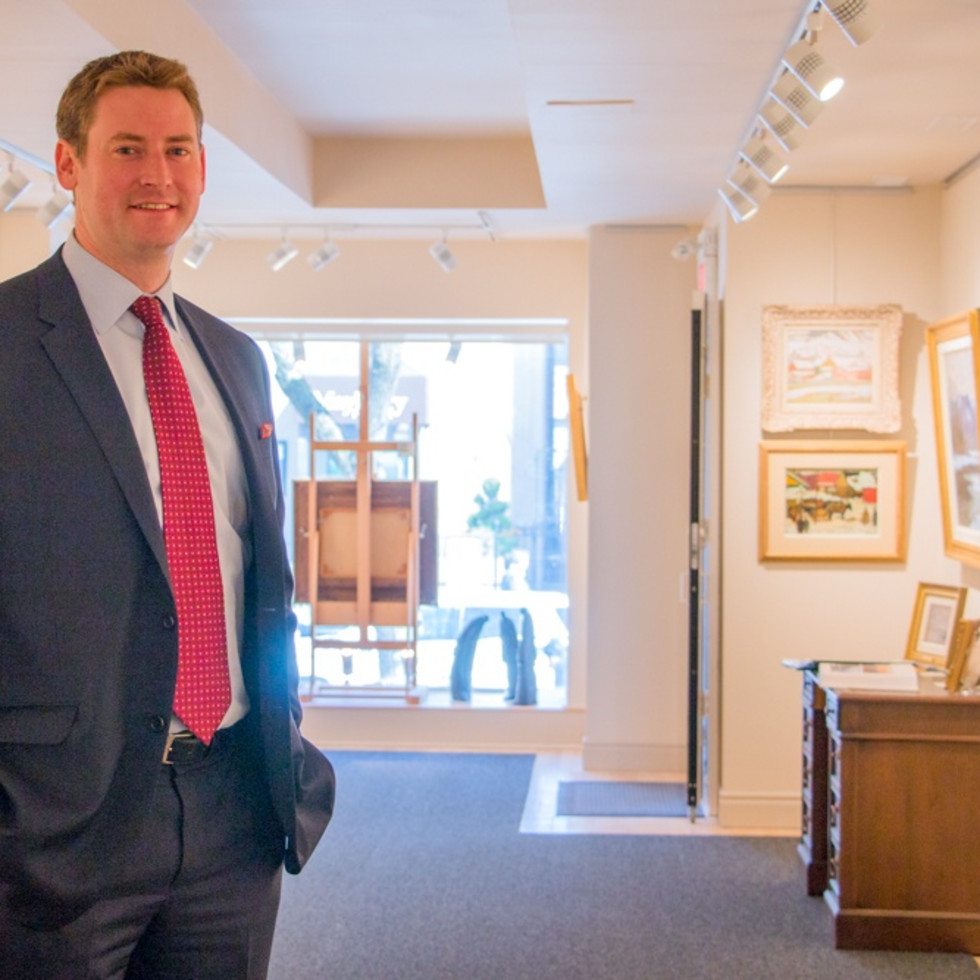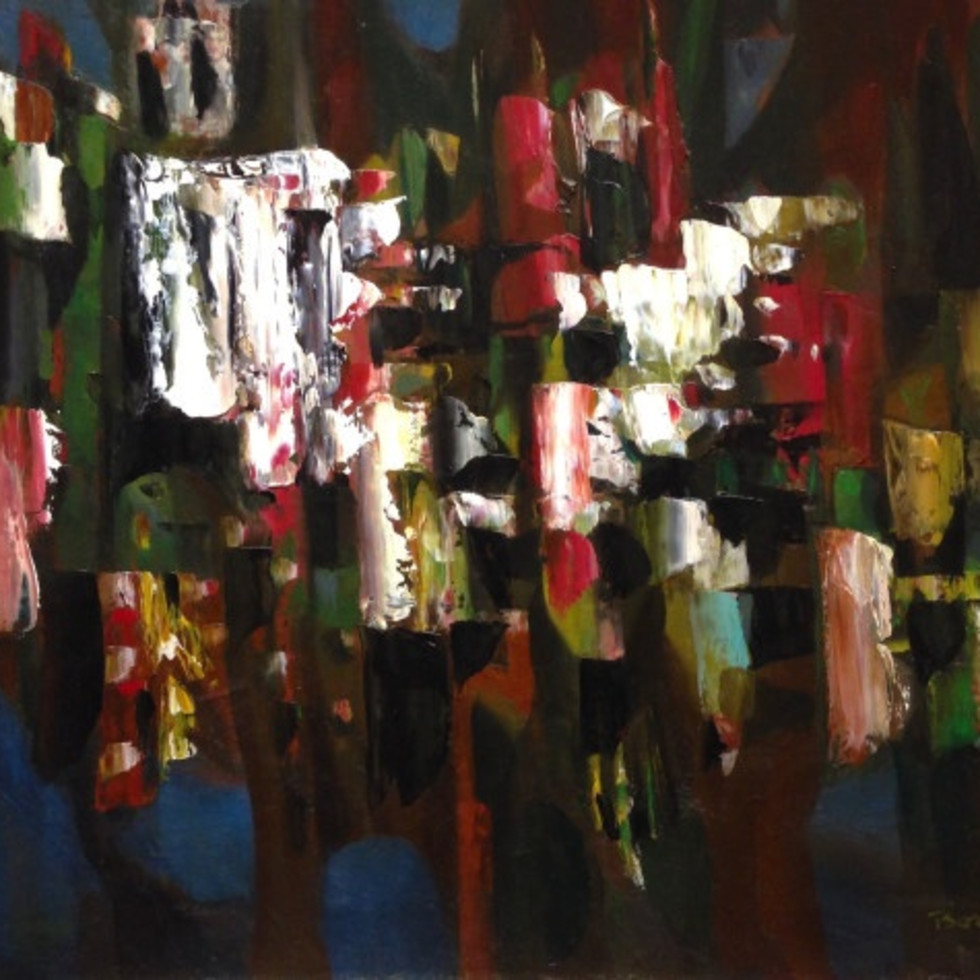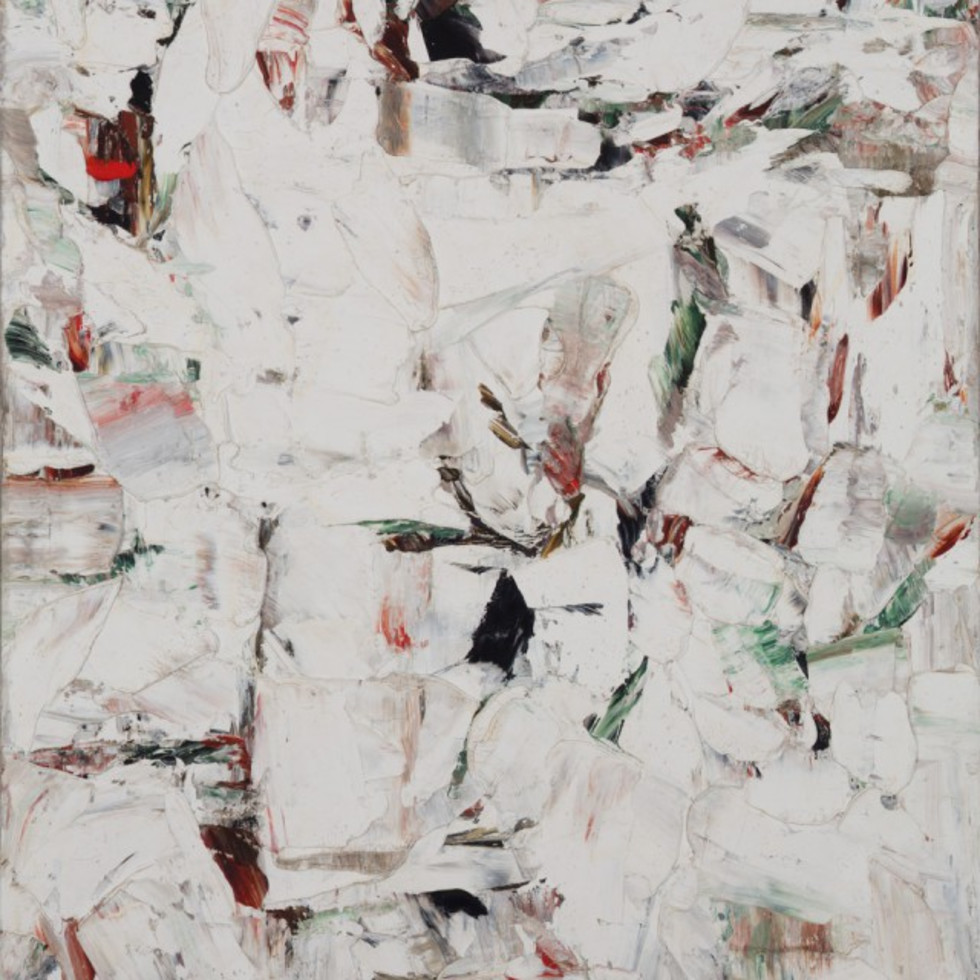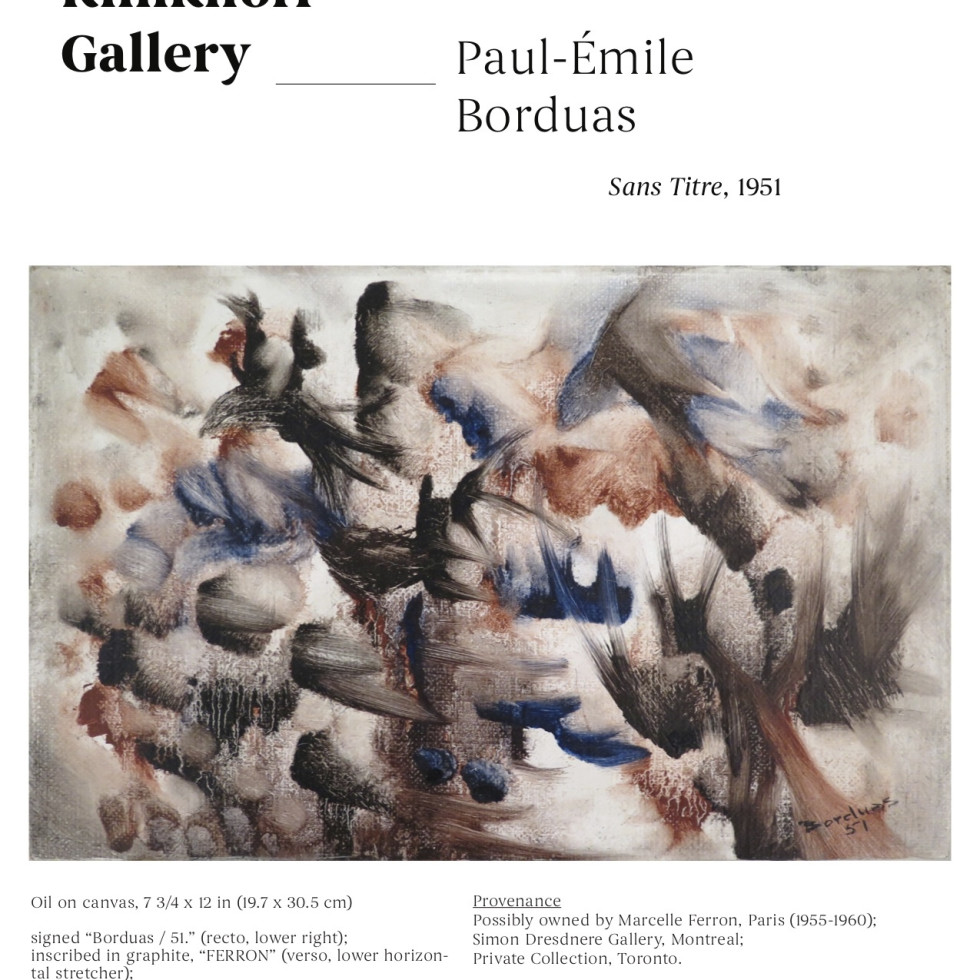Paul-Émile Borduas
 "I have no pre-conceived idea. Facing the blank paper with my mind empty of any literary ideas, I obey whatever impulse comes first. If I have the idea of applying the charcoal in the middle of the paper or at one of the sides, I do so without hesitation, and so I go on."
Paul-Émile Borduas, 1942
"I have no pre-conceived idea. Facing the blank paper with my mind empty of any literary ideas, I obey whatever impulse comes first. If I have the idea of applying the charcoal in the middle of the paper or at one of the sides, I do so without hesitation, and so I go on."
Paul-Émile Borduas, 1942
Paul-Émile Borduas had a profound impact on the development of Quebec’s art scene. Born in Saint-Hilaire, QC, he began his artistic journey apprenticing under Ozias Leduc, assisting him in church decoration projects in Sherbrooke, Halifax, and Montreal. Borduas later studied at Montreal’s School of Fine Arts (1923–1927) and continued his education at the Ateliers d’Art Sacré in Paris (1928–1930).
Returning to Montreal during the Great Depression, Borduas turned to teaching to make a living, securing a position at the École du Meuble in 1937. Here, he discovered the concept of automatism, inspired by Leonardo da Vinci's advice to his students. In 1942, he exhibited 45 surrealist works at the Salle de l’Hermitage in Montreal, showcasing several of his early "Automatiste" pieces. Les Automatistes, influenced by Surrealism and its theory of automatism, emerged from this period, with Borduas leading the movement and inspiring many young artists.
In 1948, Borduas, alongside fellow artists, published the Refus global manifesto, which challenged Quebec’s conservative values, the Catholic Church, and the right-wing nationalism of Premier Maurice Duplessis. This radical stance led to his dismissal from the École du Meuble. Forced to sell his house in Saint-Hilaire, he relocated to New York, where he could pursue artistic experimentation more freely.
In 1955, Borduas moved to Paris, hoping to gain wider recognition in France. Unfortunately, he did not achieve the success he had envisioned. He died of a heart attack in Paris on February 21, 1960, leaving behind an extraordinary legacy. Borduas' influence on Quebec art is undeniable and continues to resonate in the province’s artistic landscape.











